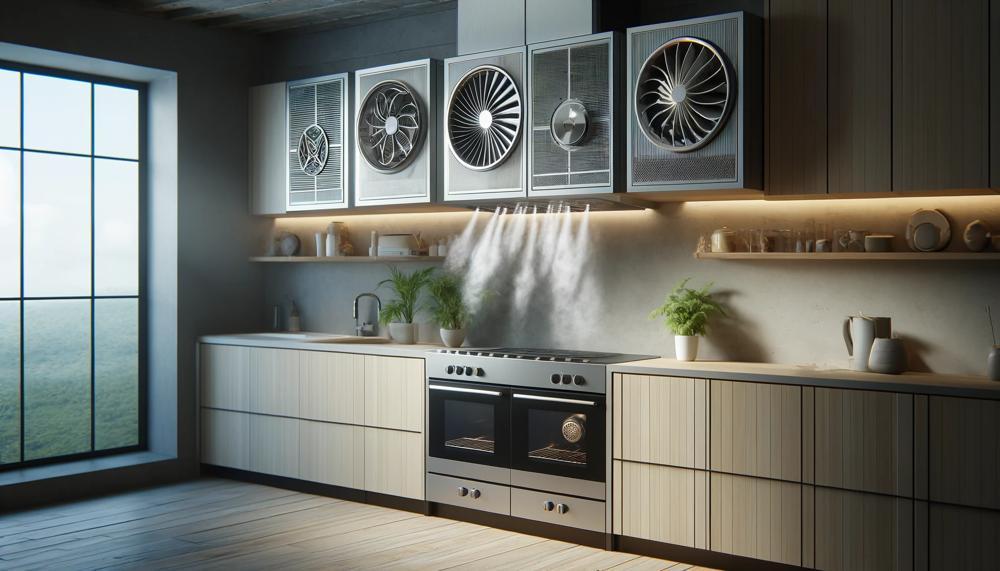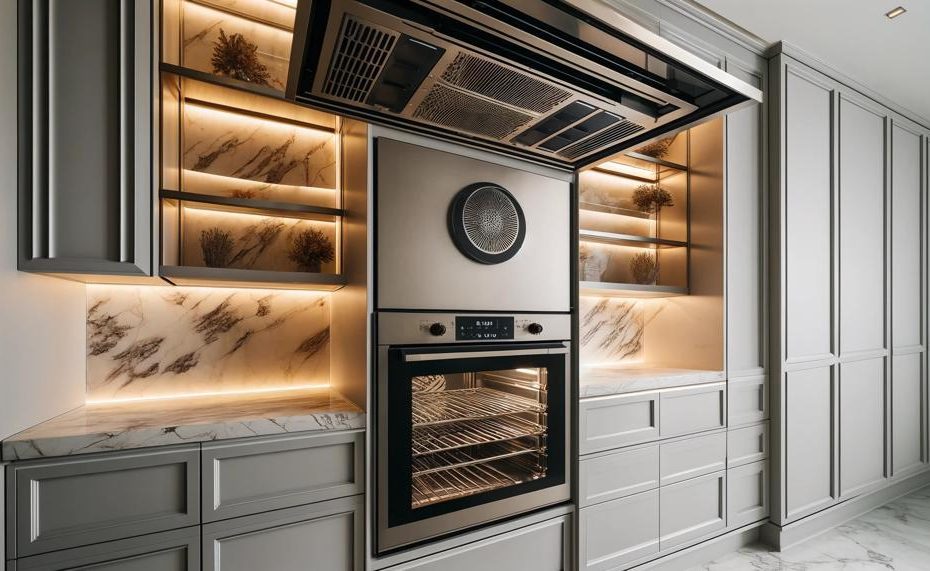Are you tired of feeling like you’re cooking in a sauna every time you turn on your built-in oven? Do you find yourself constantly opening windows and turning on fans just to keep your kitchen from becoming a sweat lodge? Well, my friend, it may not be your cooking skills that are to blame, but rather the ventilation in your oven.
So, does a built in oven need ventilation?
Yes, built-in ovens need ventilation to keep your kitchen safe and healthy. Built-in ovens are often placed inside a wall, so they can’t be vented like freestanding or slide-in ovens. Most built-in oven manufacturers have created an internal ventilation system that attaches to ducting in your wall. However, you should still have an external ventilation system in your kitchen.
Proper ventilation is important because gas ovens can release harmful gases into the air when in use, including carbon monoxide and nitrogen dioxide. An extractor fan can help to remove these by-products from the air and vent them outside, reducing the risk of exposure and improving indoor air quality. Electric ovens also require proper ventilation because they generate steam and cooking odors that can accumulate in the kitchen. A hood vent or range hood is crucial to maintain a fresh and clean kitchen environment.
You should have at least 5 mm (0.19 inches) space to the sides of the oven to allow things to ventilate properly. You should also consider the ventilation below and above the oven to make a chimney effect.

So before you start blaming yourself for burnt or undercooked meals, take a look at your oven’s ventilation. Investing in a properly ventilated built-in oven will not only improve your cooking experience but also extend the lifespan of your appliance. Trust us, both you and your taste buds will thank you for it.
Contents
Takeaway
| Adequate airflow is crucial for built-in ovens to prevent potential hazards and damage. | Insufficient ventilation can cause pressure build-up and increase the risk of fire hazards. | While not necessary, using a kitchen hood can be advantageous for individuals with respiratory sensitivities or allergies. |
| Allowing 6-8 millimeters of space around the oven ensures proper air circulation and prevents overheating. | Consistent cleaning and upkeep are vital for maintaining a safe and efficient kitchen. |
Proper ventilation is crucial for built-in ovens to prevent potential hazards and damage. Inadequate airflow can lead to increased pressure and a higher risk of fire hazards. While optional, using a kitchen hood can be beneficial for individuals with respiratory sensitivities or allergies.
To ensure proper air circulation and avoid overheating, it is recommended to leave 6-8 millimeters of space around the oven.
3 Reasons To Ventilate Your Built-In Oven
To guarantee optimal efficiency and safety, it is essential to have proper ventilation for built-in ovens. Here are three reasons why proper ventilation is crucial:
Air Circulation and Heat Dissipation
Built-in ovens generate a significant amount of heat while in use, and without adequate ventilation, this heat can become trapped in the kitchen. This can lead to discomfort while cooking and even overheating.
With a ventilating fan, hot air is circulated out of the kitchen, creating a more comfortable cooking environment.
Elimination of By-Products and Unpleasant Odors
The process of cooking produces by-products such as steam, smoke, and grease. Without proper ventilation, these by-products can linger in the kitchen and spread unpleasant odors throughout the house.
A ventilating fan helps to remove these by-products, ensuring that your kitchen stays fresh and clean.
Prevention of Fire Hazards and Health Risks
Built-in ovens require a minimum clearance from combustible materials to prevent fire hazards. A ventilating fan also helps to disperse any fumes or toxins produced during cooking, reducing the risk of health hazards. In some cases, proper ventilation may also be necessary for safe operation and compliance with building codes.
How To Ventilate a Built-In Oven
When considering which ventilation option is best for your built-in oven, factors such as the size and power of your range, as well as the location of the blower, should be taken into account. It is also important to regularly clean and maintain your vents for optimal performance.
By properly ventilating your built-in oven, you can ensure better indoor air quality, reduce cooking times, and enhance your overall cooking experience.
| Option | Features | Benefits |
| Filters | Capture grease, smoke, and other by-products | Easily removable and cleanable for optimal ventilation |
| Slat-style metal filters | Redirect smoke and collect grease in a tray | Effective in removing grease and easy to clean |
| Centrifugal force | Spins at high speeds to turn grease into liquid and collect it in a tray or cup | Efficiently removes grease with minimal maintenance |
| In-line blowers | Located in ductwork for quiet and efficient ventilation | Ideal for small kitchens with limited space |
| External blowers | Placed on roofs or exterior walls for powerful ventilation | Suitable for larger kitchens with high-BTU ranges |
Conclusion
Finally, it’s impossible to stress enough how important it is for a built-in oven to have good airflow. It also ensures that the building complies with all building regulations and operates perfectly and safely. If there isn’t enough air flow, heat and steam can build up inside the oven, cooking food unevenly and possibly breaking the device.
Additionally, this can cause bad smells and smoke to build up in the kitchen, making cooking less enjoyable. If you buy a built-in oven with good ventilation, you will not only enjoy cooking more, but your tool will also last longer.
There are several ways to get air into your built-in oven: you can use filters or centrifugal force, or you can use external fans. Cleaning and maintaining openings on a daily basis is critical, however, for the best performance. It is best to leave 6 to 8 millimeters of room around the oven so that air can flow properly. You might also want to use a cooking fan for extra benefits like better air quality.





